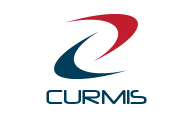Strategic planning is not something that is done once every few years, but rather is a process to produce innovative ideas which support the core framework of the credit union and designing its sustainable and competitive future.
In looking at CU strategic plans published online, the central theme is one of reducing the cost of service delivery whilst at the same time delivering high value services. So has the credit union movement in Ireland positioned itself as a low cost high value service provider?
Our main retails banks in Ireland have adjusted their cost/income ratios from unsustainable percentages ranging from 87% to 123% in 2012 to a more controllable 55% in 2014. This has been achieved by adjusting its pricing model on core services such as bank fees, loan interest rates and a major rationalisation programme with a reduction of 11% in the workforce from 2008 to 2013. Credit Unions in Ireland have a cost to income ratio of 60.50% in 2014 and it remains elevated mainly due to falling income.
While Credit Unions have little control over returns on its investment portfolio, it does have significant control over income being generated from its loan portfolio. The current average CU loan balance is €6,267 with an average interest rate of 8.90% (ILCU 2014 media release 30 September 2014). Compare this interest rate with the retail banks’ average of 13%, and we see that Credit Unions may be creating additional challenges in securing a sustainable future.
Credit Unions need to take a balanced look at how they do business and work to strengthen key areas to support their future sustainability and competitiveness. Key areas will include;
- New income sources: With non-interest income (Investment income) reducing, continued low loan demand and a reluctance of the sector to reprice its loan book to market levels (within the maximum pricing level of 1% per month), Credit Unions will need to explore alternative sources of income to include the curtailment of free transactions (transaction based fee structure, i.e. members control fees by bringing more of their business to the credit union) and growth in non-core income (e.g. insurance products).
- Cost base: With CUs cost / income ratio running at a premium of 10% over that of the banks, targeted approaches for on-going efficiency will be required.
- Member facing technologies: The ability to deliver a e-services solution reflecting changes in behaviour of member demographics is a key corner stone for sustainability and competitiveness within the financial services sector. A successful e-services platform will reduces costs in the long run (paper originated transactions has a higher cost than e-based originated transactions), and facilitate higher volumes of transactions to be completed within the same time-frame.
The success of the above strategies is how Credit Unions explore the importance of understanding how value is perceived by its members and how to design appropriate services to meet the demands of its membership.
